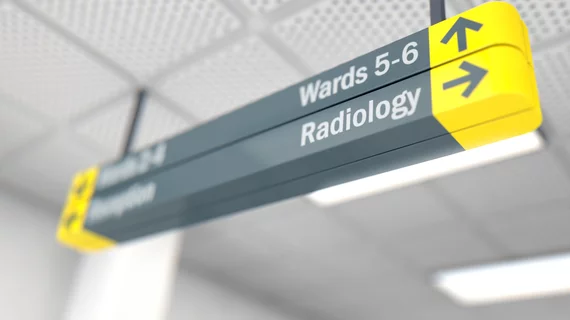The 5 most common causes of adverse imaging events in radiology
Adverse events are relatively rare in radiology—numbering in the hundreds, rather than thousands. But even one case of patient harm is too many, experts argue, underlining the importance of staying on top of this issue, especially as imaging volumes continue to grow worldwide.
Researchers with Oulu University Hospital, in Finland, recently took a closer look at this trend in their own country and found about 300 such incidents occurred over a seven-year period. The vast majority took place during CT imaging, while “incorrect procedure” was the top cause, according to their analysis, published Feb. 20 in Radiography.
The numbers may seem paltry, but the Finnish team believes underreporting may be widespread in their country and abroad. They’re urging radiologists to make accurate accounting a priority so the profession can move toward zero harm.
“Regardless of the fact that medical imaging is quite safe, we as radiological professionals must be fully aware of adverse events,” wrote lead author Tarja Tarkiainen, with the hospital’s Department of Diagnostic Radiology, and colleagues. “As radiology examination volumes grow every year, we can conclude that the number of adverse events will also increase. Patient safety should be at the center of everything we do, and to improve quality, correct procedure should be the goal in every case.”
Tarkiainen and colleagues gathered their data from radiology incident reports, submitted to Finland’s Radiation and Nuclear Safety Authority between 2010 and 2017. They excluded a handful of events in nuclear medicine, radiotherapy and animal radiology to reach a final total of 293.
The vast majority of incidents occurred during CT imaging (about 68%), followed by x-ray exams (28%). Only a small portion occurred in other modalities such as fluoroscopy, mammography, angiography and interventional radiology (4%), the team reported. And the most common dose of unnecessary radiation was one millisievert or less, occurring in nearly 90% of reported cases.
Researchers pinpointed five primary causes for adverse imaging events:
1) Incorrect patient examined was the top driver in 32% of cases, Tarkiainen and colleagues noted. Common root causes for this misidentification included failing to verify a patient’s ID or incorrectly written referrals.
2) Wrong procedure, site or side occurred in about 30% of cases, with 83% of such errors happening in CT imaging. Report authors did not explore the root causes of this.
3) Human errors and errors of knowledge was the cause in 20% of adverse events, with improper use of the contrast agent injector, wrongly selected protocols or incorrectly positioned slices leading the way.
4) Equipment malfunctioned about 12% of the time, with about 47% of such mishaps occurring in CT imaging. Common root causes included interrupted exams, missing images, and service or installation failures. Poor image quality was the driver in two cases.
5) Pregnant patient or staff was the driver of about 6% of events, either because a patient’s pregnancy had not been identified properly, or staffers were accidentally exposed to extra radiation.
Tarkiainen also noted that oftentimes adverse events included little to no information. In 10 cases, there was no description of the event whatsoever, while others were “so sparse that neither the adverse event nor the reason could be identified.” Underreporting is likely widespread, they added, pointing to one previous study that estimated 60% of adverse events are swept under the rung.
It’s possible that in some instances, the radiation exposure is so miniscule that radiology departments don’t believe filing a report is worth the trouble, or reporting processes are viewed as too cumbersome.
“This is unfortunate, since learning from these near misses may reduce patients' radiation doses in the future,” Tarkiainen and colleagues concluded. “It is our responsibility to do our work as well and as safely as possible,” they added later. “To improve safety, it is important to report adverse events and near misses and seek to learn from them. In this way, we improve our safety culture for the benefit of the patient.”

